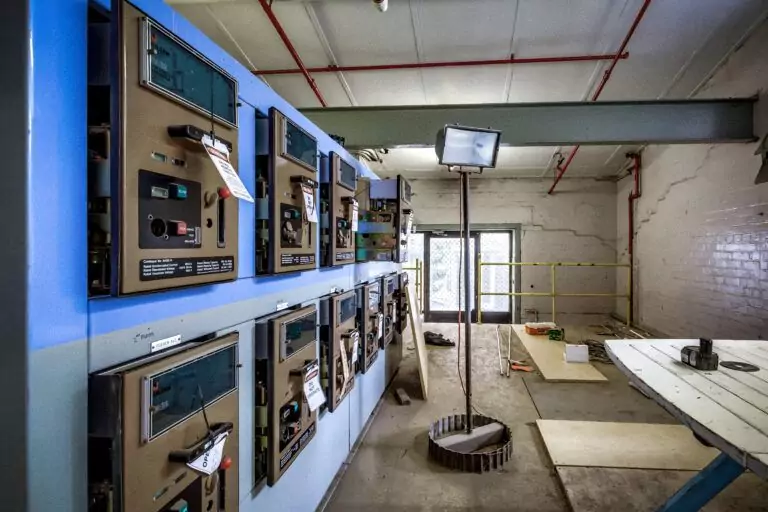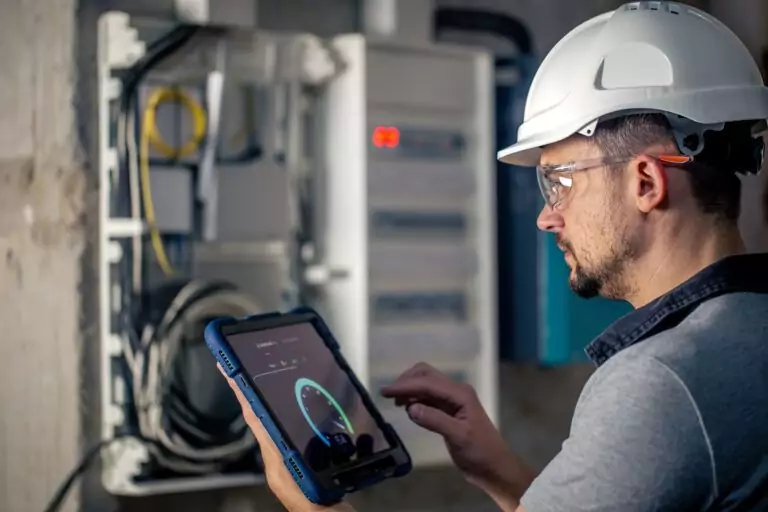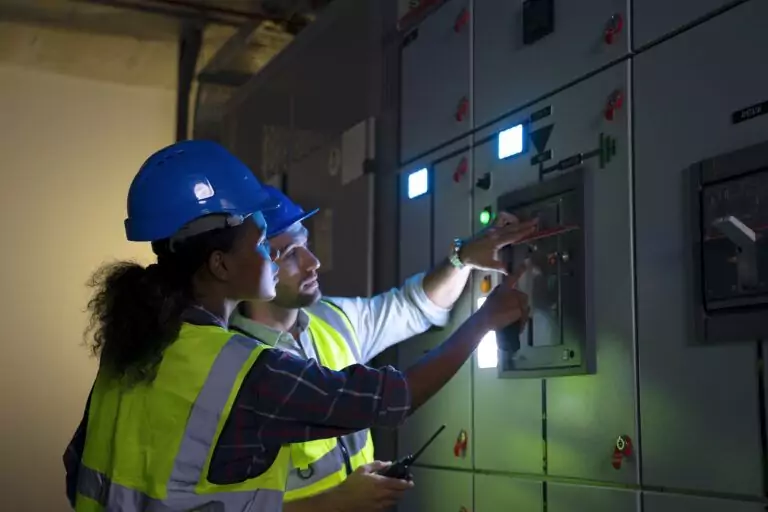Diving into the world of automation, the realm of Programmable Logic Controllers (PLCs) stands as a cornerstone for modern industrial control systems. Whether you’re a seasoned engineer or a curious newcomer, understanding the basics of PLC programming is essential for crafting efficient, reliable automation solutions. This article unfolds the PLC programming journey, from the initial step of identifying project requirements to the final stages of testing, documentation, and training personnel.
It’s a comprehensive guide that walks you through determining system inputs and outputs, selecting the right hardware, and developing the control logic that breathes life into machines. Along the way, we’ll explore the importance of a meticulously controlled environment, establishing communication needs, and the critical process of choosing, installing, and configuring PLC hardware. With practical insights and a step-by-step approach, this article is your gateway to mastering the art of PLC programming, paving the way for innovative automation projects that stand the test of time. For professionals working in instrumentation and controls engineering, these steps form the foundation of smarter automation systems that integrate seamlessly across industrial processes.
Identify the Project Requirements
Identifying project requirements is a critical step in the successful management and execution of any project. This process involves understanding and documenting the needs and expectations of stakeholders, as well as the objectives, deliverables, and constraints of the project. The primary goal is to ensure that the project delivers the intended outcomes within the specified constraints of time, cost, and quality.
It requires regular review and adjustments as the project progresses and as new information or changes in the environment arise. Understanding and effectively managing project requirements are foundational to achieving the project’s goals and ensuring its success. It helps align the project’s outputs with the strategic objectives of the organisation, optimise resources, and minimise risks associated with changes and uncertainties.
Determine System Inputs and Outputs
Determining the system inputs and outputs is a fundamental step in the design and analysis of any system. It involves identifying all the data and resources that enter (inputs) and leave (outputs) the system. The key goal is to ensure a comprehensive understanding of how the system interacts with its environment and other systems.
Inputs could range from raw data user commands, or physical materials, depending on the nature of the system, while outputs include processed data, products, or services. This identification helps in clarifying the system’s boundaries and is crucial for the subsequent design, development, and optimisation processes, aiming to achieve efficiency and effectiveness in meeting the system’s objectives.
Assess Control Environment and Conditions
Assessing the control environment and conditions involves evaluating the systems, processes, and structures that govern the operation and behaviour of a system. This assessment aims to ensure that the system operates under controlled and predictable conditions, essential for maintaining quality, reliability, and security. The control environment includes policies, procedures, and cultural values that influence the design and administration of controls.
Conditions refer to the external and internal factors that affect the system’s performance, such as environmental variables, user demands, or regulatory requirements. Understanding these aspects is critical for managing risks, ensuring compliance, and fostering an environment conducive to achieving the system’s goals.
Establish Communication Needs
Establishing communication needs is about identifying and planning for the exchange of information within and outside of the system. This step is pivotal for the coordination, integration, and alignment of system components and stakeholders. It involves determining the types, frequencies, formats, and channels of communication necessary to support the system’s operations and objectives.
Effective communication is key to ensuring that all parts of the system work together seamlessly and that stakeholders are informed, engaged, and able to contribute to the system’s success. This process includes considering the need for real-time data exchange, collaborative tools, reporting mechanisms, and feedback loops. Establishing clear communication needs and protocols helps in minimizing misunderstandings, reducing errors, and enhancing the overall performance and responsiveness of the system.
Select the Appropriate PLC Hardware
Selecting the appropriate PLC (Programmable Logic Controller) hardware is crucial for ensuring that the system meets the specific needs of the project. Each of these components must be carefully matched to the project’s requirements to ensure optimal performance, reliability, and scalability of the control system.
CPU Type Based on Processing Needs
Selecting the CPU type for a PLC system is dictated by the project’s processing needs. The CPU must have the capacity to handle the system’s complexity, including the speed of operations and the volume of data management. High-speed processing and substantial data handling capabilities are essential for complex automation tasks, ensuring the system’s responsiveness and efficiency.
Input/Output Modules for Specific Signals
Input/Output modules are selected based on the specific signals the PLC system needs to process. Digital modules are utilised for on/off signals, while analogue modules are chosen for handling variable signals such as temperature or pressure. The correct configuration of I/O modules is crucial for accurately capturing and controlling the physical environment of the system, ensuring precise operation and monitoring of industrial processes.
Communication Modules for Network Integration
Communication modules are critical for integrating the PLC with other systems and devices over a network. These modules facilitate data exchange and interoperability across various platforms, supporting protocols such as Ethernet, Modbus, or Profibus. Effective network integration, enabled by the appropriate communication modules, is essential for the centralised control and coordination of complex systems, enhancing operational efficiency and reliability.
Install and Configure the PLC Hardware
Installing and configuring the PLC hardware requires precise mounting and wiring according to schematics, ensuring a solid foundation for the system’s operation. Proper installation and configuration are essential for the reliability and efficiency of the PLC system, directly impacting its performance and the success of the automation project.
Mounting and Wiring According to Schematics
Mounting and wiring the PLC hardware according to schematics is a critical step, ensuring that all components are correctly positioned and securely connected. This process involves following detailed diagrams to accurately place and wire each part of the PLC system, from the CPU to the I/O modules. Accurate wiring is essential for the reliable transmission of signals between the PLC and other devices, forming the backbone of the system’s operational integrity.
Setting Up Power Supply and Grounding
Setting up the power supply and grounding is fundamental to the PLC system’s safety and stability. This step requires establishing a stable power source and implementing proper grounding practices to protect the system from electrical noise and potential surges. A correctly configured power supply and grounding system not only safeguards the PLC hardware but also ensures consistent performance, minimising the risk of data errors or hardware damage due to electrical interference.
Develop the PLC Program
Developing the PLC program involves crafting the control logic that dictates the system’s operations. This stage is crucial for translating the system’s requirements into actionable instructions that the PLC can execute, ensuring the automation process is efficient, reliable, and aligned with the project’s goals.
Define the Control Logic for Processes
Defining the control logic for processes is the foundational step in PLC programming. This involves outlining the operational sequences and detailing how the system responds to specific inputs. It’s a critical task that sets the groundwork for the entire automation process, ensuring that each action is triggered correctly under the right conditions.
This clarity in control logic is essential for the system’s efficiency and reliability.
Create Ladder Diagrams for Sequential Control
Creating ladder diagrams serves as a key method in visualizing and implementing sequential control in PLC systems. Resembling electrical relay logic schematics, these diagrams are intuitive for engineers to design and troubleshoot. Ladder diagrams effectively outline the step-by-step operations of a system, facilitating a clear understanding of process control and the flow of operations, making it easier to diagnose and rectify issues.
Utilise Function Block Diagrams for Complex Logic
For managing more complex logic, function block diagrams are utilized within PLC programming. These diagrams enable the graphical representation of interrelated processes, where each block symbolises a function or operation with defined inputs and outputs. Function block diagrams are instrumental in handling intricate control strategies, offering a structured and modular approach to designing control logic.
This method significantly enhances the manageability and scalability of complex automation tasks, ensuring robust and adaptable system behaviour.
Input the Program into the PLC
Inputting the program into the PLC is a critical phase where the developed control logic is transferred into the PLC hardware, bringing the automation system to life.
This step is pivotal in transitioning from the design phase to the actual operation, marking the point where theoretical designs are tested in the real-world environment of the PLC system. Successful input of the program is essential for proceeding to testing, debugging, and ultimately, the system’s deployment and operation.
Use PLC Manufacturer’s Software Tools
Using PLC manufacturer’s software tools is essential for programming and configuring the PLC. These tools provide a user-friendly interface for engineers to input, edit, and manage the control logic. Designed to ensure compatibility and maximize the performance of the PLC, these software tools offer features like simulation and debugging to streamline the development process.
Utilising these specialised software tools is crucial for the efficient and accurate implementation of the PLC program.
Transfer Program via USB or Network
Transferring the program into the PLC can be accomplished via USB or network connections, depending on the system’s capabilities and the project’s requirements. USB transfers are typically used for direct, one-time programming or updates, offering a simple and quick method for loading the program. Network transfers, on the other hand, allow for remote programming and updates, facilitating flexibility and efficiency in managing the PLC system.
Both methods are pivotal in ensuring that the developed program is accurately and securely inputted into the PLC and ready for operation and testing.
Test and Debug the Program
Testing and debugging the program are vital steps in the PLC programming process aimed at ensuring the system operates as intended. Through iterative testing and debugging, the PLC program is refined to meet the project’s requirements and operational goals, paving the way for successful system deployment.
Simulate the Program Using Software
Simulating the program using software is a crucial step in the PLC development process. It allows engineers to test the control logic in a virtual environment, identifying and correcting errors without the risk of damaging the actual system. Simulation provides a safe and efficient way to ensure the program behaves as expected under various conditions, facilitating the optimisation of system performance before deployment.
Conduct Field Tests with Actual Inputs
Conducting field tests with actual inputs is essential for validating the PLC program in real-world conditions. This involves running the program in the actual operational environment, using real inputs and outputs to verify its performance and reliability. Field tests help uncover issues that may not be apparent during simulation, allowing engineers to make necessary adjustments to ensure the system meets the operational requirements and safety standards.
Adjust Logic and Parameters Based on Results
Adjusting logic and parameters based on results from simulations and field tests is a critical part of the testing and debugging process. This iterative approach enables engineers to refine the program, optimising its efficiency and effectiveness. Adjustments may involve fine-tuning control logic, modifying parameters, or reconfiguring system settings to improve performance, reliability, and safety.
This process ensures that the PLC program is fully optimised and ready for successful deployment and operation.
Finalise and Document the Program
Finalising and documenting the PLC program are critical steps to ensure its longevity and ease of maintenance. Proper documentation ensures that knowledge about the system is preserved and accessible, facilitating efficient management and updates of the PLC program over its lifecycle.
Lock Program to Prevent Unauthorized Changes
Locking the program is a crucial security measure in PLC programming, ensuring that unauthorised changes are prevented. This step protects the integrity of the system’s operations, maintaining the reliability and safety of the automated processes. By securing the program, companies can safeguard their operations against accidental or malicious alterations, preserving the system’s performance and stability.
Create Operation and Maintenance Manuals
Creating operation and maintenance manuals is essential for the long-term success and sustainability of a PLC system. These manuals provide comprehensive instructions and guidelines for operating the system, troubleshooting common PLC errors, and performing routine maintenance. They serve as an invaluable resource for technical staff, enabling efficient system management and minimising downtime.
Documenting these procedures ensures that critical knowledge is preserved, facilitating easier updates and modifications to the system in the future.
Train Personnel on the PLC System Operation
Training personnel on the PLC system operation is a key step in ensuring the efficient and safe use of automation technology.
Effective training enhances the operational capabilities of the workforce, ensuring they are competent in utilising the PLC system to its full potential, thereby optimising productivity and maintaining high safety standards.
Provide Hands-on Training for Daily Operation
Provide hands-on training for daily operations to ensure personnel are fully equipped to manage the PLC system. This practical approach allows staff to gain direct experience with the system, familiarising themselves with its functionalities and operational procedures. Hands-on training is crucial for building confidence and competence among the workforce, enabling them to operate the system efficiently and effectively.
Explain Troubleshooting and Emergency Procedures
Explain troubleshooting and emergency procedures to prepare personnel for handling unexpected situations. This training covers the identification of common issues, the steps for diagnosing problems, and the implementation of corrective actions. Understanding emergency procedures is essential for ensuring a swift response to potential system failures or malfunctions, minimising downtime and maintaining safety standards.
Building Smarter Automation from the Ground Up
Mastering basic PLC programming isn’t just about writing code, it’s about orchestrating a precise and reliable system from planning through to training. From identifying project requirements to installing hardware and programming logic and conducting rigorous testing, every step contributes to building automation that performs with consistency and control.
At Vista Projects, we combine decades of industrial engineering expertise with advanced system integration to deliver PLC solutions that work smarter, not harder. Our collaborative, data-driven approach ensures your automation projects are designed for success from the start.
Let’s take your control systems to the next level, reach out and power up your automation journey with us.









